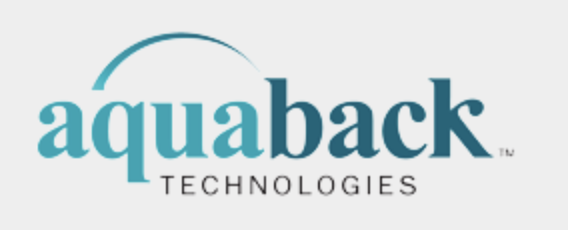Revolutionizing Water Distillation
Aquaback is at the forefront of revolutionizing water distillation with its cutting-edge technology.
Our innovative approach sets new standards in the industry by utilizing less than 20 Watt hours per gallon of distillate, while recycling an impressive 99.3% of the heat of vaporization.
This breakthrough not only ensures unparalleled energy efficiency but also translates into an astonishingly low operating cost of just 0.3 cents per gallon. Compared to the prices charged by centralized utilities, Aquaback's cost-effective solution offers substantial savings while delivering superior water quality.
Aquaback’s Technology Advantage: Revolutionary Energy Efficiency
Unparalleled Energy Efficiency
Aquaback's distillation technology has achieved remarkable breakthroughs that eliminate the disadvantages of traditional methods. Through patented innovation, Aquaback distillers now operate with unparalleled energy efficiency, utilizing less than 20 Watt hours per gallon of distillate by recycling an impressive 99.3% of the heat of vaporization.
Significant Improvement in Energy Efficiency
This translates into a substantial reduction in operating costs, with a mere 0.3 cents per gallon compared to the expenses incurred by consumers from centralized utilities. The significant improvement in energy efficiency, from 98% to 99.3% heat recycling, has had a profound impact on overall energy consumption, making Aquaback a leader in sustainable and cost-effective distillation solutions.
Advantages of traditional distillation are compelling.
Traditional distillation offers compelling advantages, providing reliably safe water quality from highly contaminated sources. It eliminates the need for extensive pre and post-treatment like RO systems, removing all contaminants in a single step. Distilled water is free from pathogens, heavy metals, chemicals, and pharmaceuticals. With its high efficiency and automatic pathogen neutralization, distillation is a trusted method. Additionally, it enables efficient wastewater recycling, transforming over 90% of contaminated water into high-quality distillate.
Disadvantages of Traditional Distillation Prevent Widespread Use
High Energy Consumption
The most significant challenge in traditional distillation is the high energy consumption. Even the most efficient vapor compression distillers require more than 140 Watt hours of electricity to produce a gallon of distilled water. This results in operating costs that are often prohibitively expensive, posing a barrier to widespread adoption.
Calcium Carbonate Build Up (Scaling)
One of the major issues in traditional distillation is the accumulation of calcium carbonate, commonly known as scaling, on evaporator surfaces. This build-up significantly increases the required power consumption and eventually hampers the distillation process. Dealing with this problem involves frequent, costly, and inconvenient acid washing and maintenance procedures, creating operational challenges.
Poor Ammonia Removal
Distillation faces difficulties in effectively removing ammonia, a form of nitrogen that is highly soluble in water and commonly present in residential and commercial wastewater (sewage). This makes the removal of ammonia through distillation techniques challenging, requiring alternative approaches or additional treatment steps to ensure effective purification.
Capital Cost of Equipment
The capital cost of equipment is a significant concern in traditional vapor compression distillers. Operating at approximately 50 psi, these systems require sturdy and heavy components to withstand the pressure, resulting in increased weight and higher expenses. This poses challenges in terms of equipment affordability and overall system implementation.
These challenges highlight the importance of addressing these limitations through innovative solutions that enhance the energy efficiency, scaling resistance, ammonia removal capabilities, and cost-effectiveness of distillation processes.
